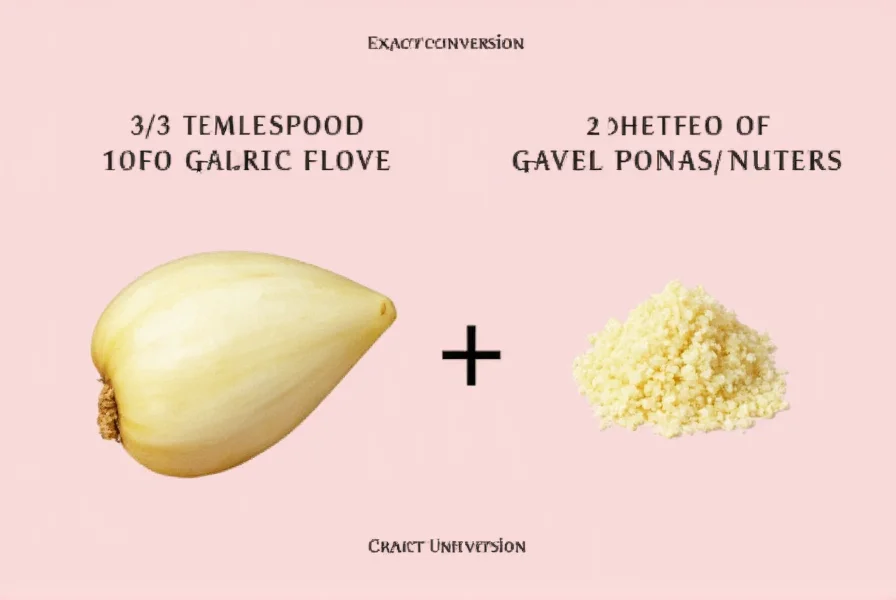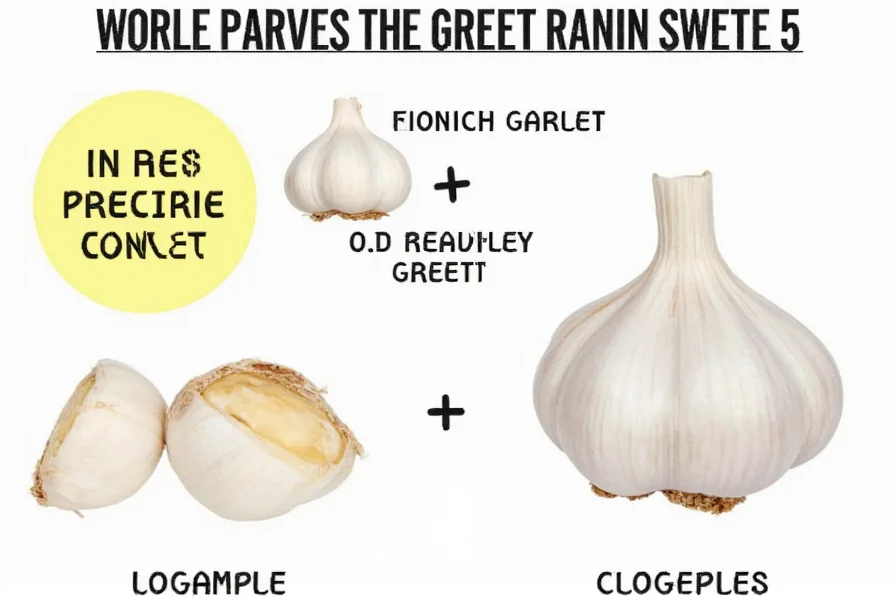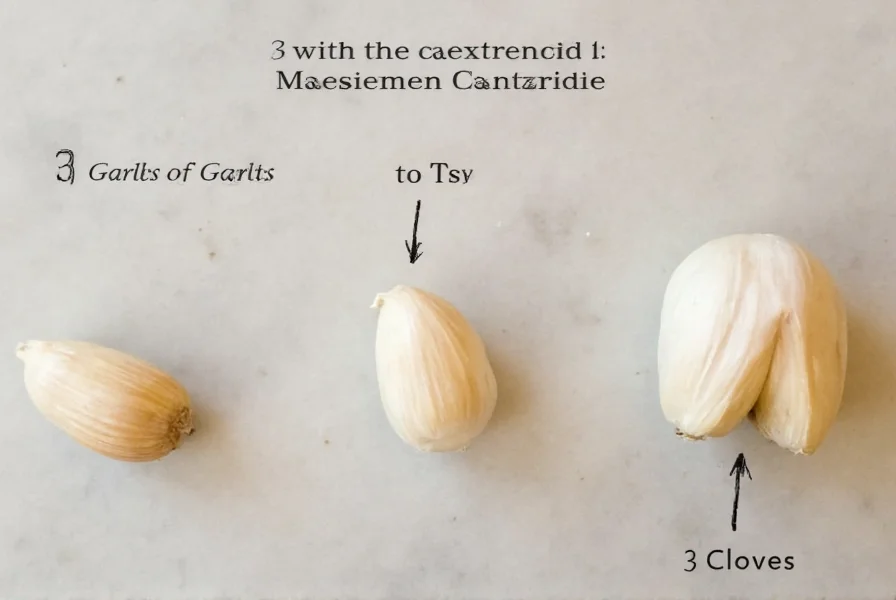Converting garlic measurements is essential for precise cooking and recipe execution. When a recipe calls for a specific number of cloves but you only have pre-minced garlic or need to substitute garlic powder, understanding these conversions ensures your dishes turn out perfectly every time.
Understanding Garlic Measurements
Garlic measurements can be confusing because cloves vary significantly in size. A single garlic bulb typically contains 10-12 cloves, but these range from small (about 1/2 inch long) to large (over 1 inch long). This variation directly impacts how much minced garlic you'll get from each clove.
Professional chefs and experienced home cooks know that accurate garlic measurement affects both flavor balance and dish quality. Too little garlic might leave your recipe lacking depth, while too much can overpower other ingredients and create an unpleasantly sharp taste.
Garlic Conversion Guide
Here's a detailed breakdown of garlic measurements to help you convert between fresh cloves and other forms:
| Garlic Form | 1 Clove Equivalent | 3 Cloves Equivalent |
|---|---|---|
| Minced fresh garlic | 1/2 teaspoon | 1.5 teaspoons |
| Chopped fresh garlic | 3/4 teaspoon | 2.25 teaspoons |
| Garlic powder | 1/8 teaspoon | 3/8 teaspoon |
| Garlic salt | 1/4 teaspoon | 3/4 teaspoon |
| Bottled minced garlic | 1/2 teaspoon | 1.5 teaspoons |
These measurements assume average-sized garlic cloves. If you're working with particularly small or large cloves, adjust accordingly. For the most accurate measurement, especially in delicate recipes, consider using a kitchen scale—three average garlic cloves weigh approximately 9 grams.

Factors Affecting Garlic Measurements
Several variables influence how much minced garlic you'll get from fresh cloves:
- Clove size: Grocery store garlic varies from "small" (under 1 inch) to "jumbo" (over 1.5 inches)
- Preparation method: Minced garlic packs more densely than roughly chopped
- Moisture content: Freshly harvested garlic contains more water than stored garlic
- Age of garlic: Older garlic cloves may be drier and yield less volume when minced
For recipes where garlic plays a starring role—like garlic bread, aioli, or pesto—using fresh cloves is always preferable to pre-minced or powdered alternatives. The flavor profile of freshly prepared garlic is more complex and aromatic.
Practical Substitution Tips
When substituting between garlic forms, keep these professional kitchen tips in mind:
- When converting from fresh to powder: Use 1/8 teaspoon garlic powder for each clove of fresh garlic
- When using garlic salt instead of fresh: Remember it contains salt, so reduce additional salt in your recipe
- For roasted garlic: Three roasted cloves yield about 1 teaspoon of soft, caramelized garlic
- When precision matters: Mince garlic and measure in a leveled teaspoon for accuracy
Understanding how many teaspoons is 3 cloves of garlic becomes particularly important when scaling recipes up or down. Professional chefs often standardize their recipes using weight measurements for absolute precision, but teaspoon measurements work well for home cooking.

When Measurement Precision Matters Most
Certain recipes require precise garlic measurements for optimal results:
- Emulsified sauces: Aioli, mayonnaise, and hollandaise need exact garlic amounts to maintain stability
- Pickling and preserving: Acid balance depends on precise ingredient ratios
- Delicate seafood dishes: Overpowering garlic can ruin subtle flavors
- Baking applications: Garlic bread or savory pastries need balanced seasoning
For everyday cooking like pasta sauces, soups, and stir-fries, the standard garlic clove to teaspoon conversion of 1:1/2 works perfectly. Experienced cooks often develop a feel for garlic amounts through practice, but having the reference point of 3 cloves of garlic equals how many teaspoons provides a solid foundation.
Storing Garlic for Optimal Freshness
Proper storage affects both garlic's shelf life and its measurement consistency:
- Store whole bulbs in a cool, dark place with good air circulation
- Refrigerate peeled cloves in an airtight container for up to 10 days
- Freeze minced garlic in ice cube trays covered with olive oil
- Avoid storing garlic in oil at room temperature due to botulism risk
Fresh garlic maintains its volume and flavor better than older cloves, making your garlic measurement equivalents more consistent. As garlic ages, it dries out and yields less when minced, which affects your garlic clove size to teaspoon ratio.
Frequently Asked Questions
How many teaspoons is 3 cloves of garlic when minced?
Three average-sized garlic cloves yield approximately 1.5 teaspoons of minced garlic. This measurement assumes the cloves have been finely minced and lightly packed into the measuring spoon. Small cloves may produce closer to 1 teaspoon, while very large cloves could yield up to 2 teaspoons.
Can I substitute garlic powder for fresh garlic in a 1:1 ratio?
No, garlic powder is much more concentrated than fresh garlic. The proper substitution ratio is 1/8 teaspoon of garlic powder for each fresh garlic clove. Using equal amounts would result in an overwhelmingly strong garlic flavor and potentially bitter notes in your dish.
Does roasting garlic change the measurement conversion?
Yes, roasting garlic significantly changes its volume and texture. Three roasted garlic cloves yield approximately 1 teaspoon of soft, caramelized garlic paste—about one-third the volume of raw minced garlic. The roasting process concentrates flavors while reducing moisture content.
How can I measure garlic accurately without a scale?
For the most accurate measurement without a scale, finely mince your garlic and gently press it into a measuring teaspoon with the back of a knife. Level off the top for precision. When substituting between fresh and powdered garlic, remember that 3 fresh cloves equal approximately 3/8 teaspoon of garlic powder, not a full teaspoon.
Why does my bottled minced garlic taste different than fresh?
Bottled minced garlic contains preservatives and citric acid to maintain freshness, which alters both flavor and texture. It's also processed from garlic that's often less fresh than what you'd select at the store. While convenient, it lacks the bright, complex flavor of freshly minced garlic. When substituting, use the same volume (3 cloves = 1.5 tsp) but consider adding a pinch of sugar to balance the acidity.











 浙公网安备
33010002000092号
浙公网安备
33010002000092号 浙B2-20120091-4
浙B2-20120091-4